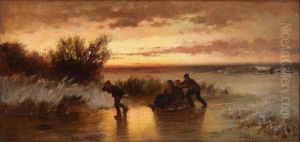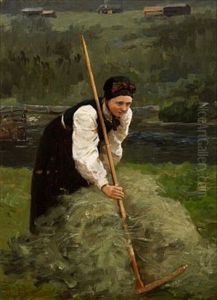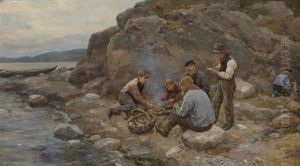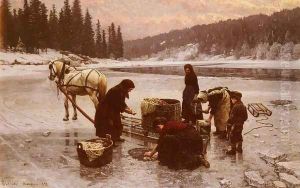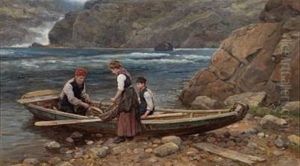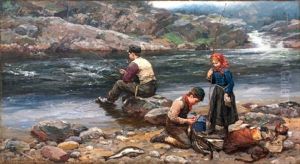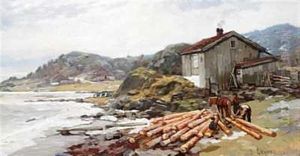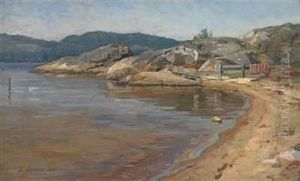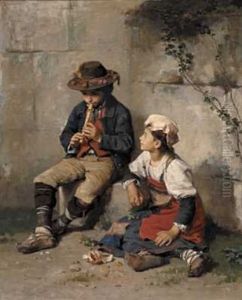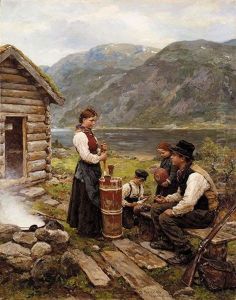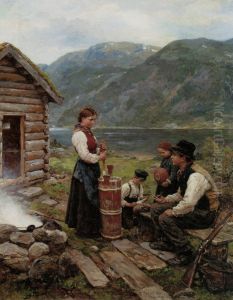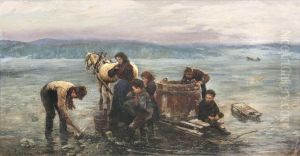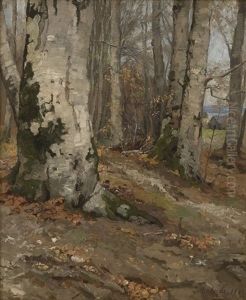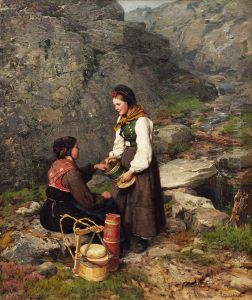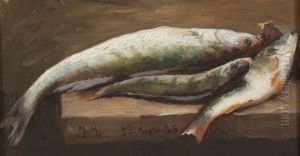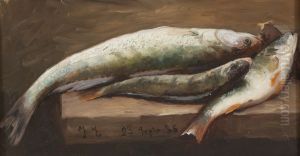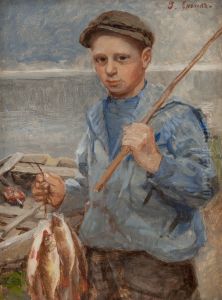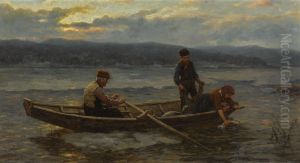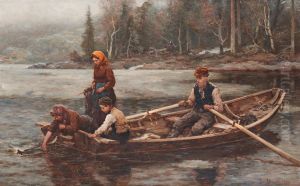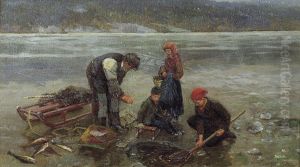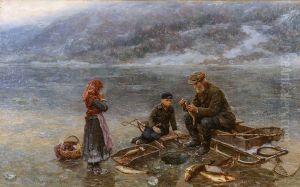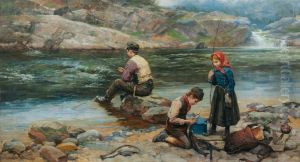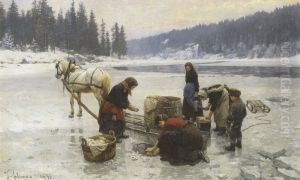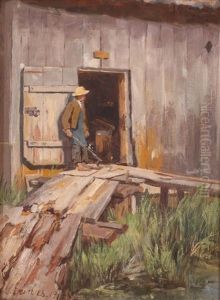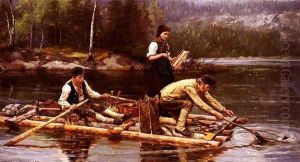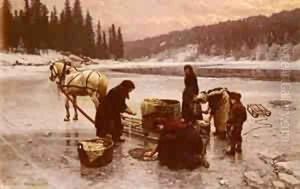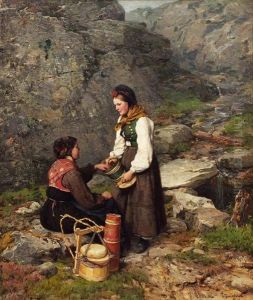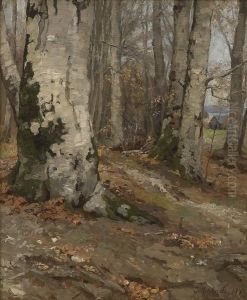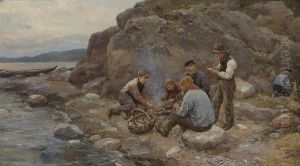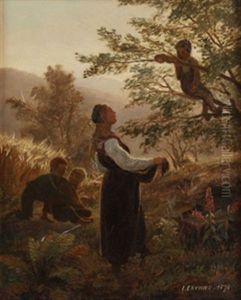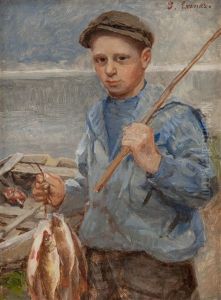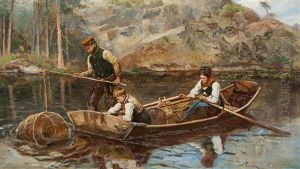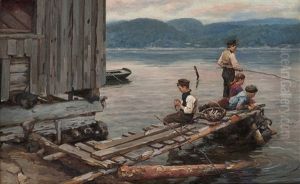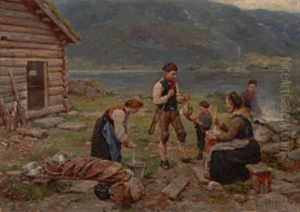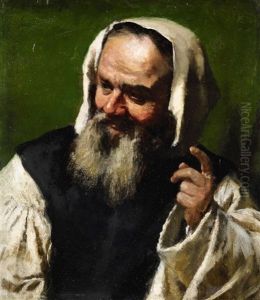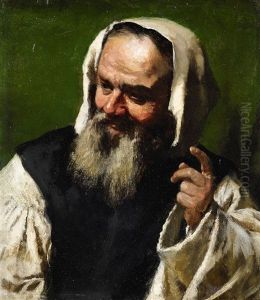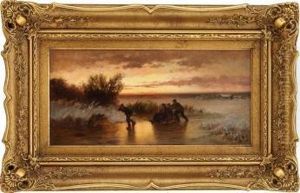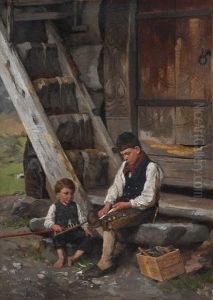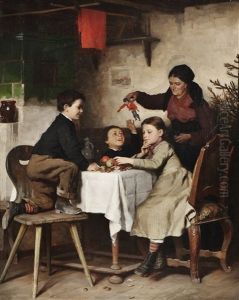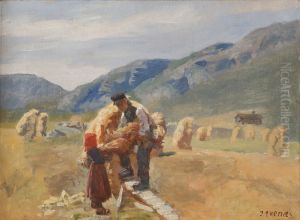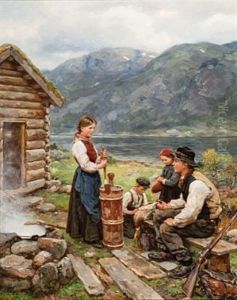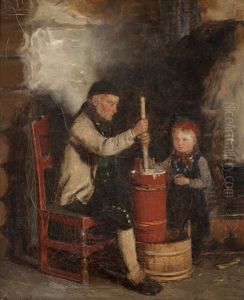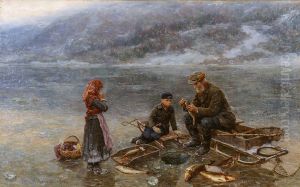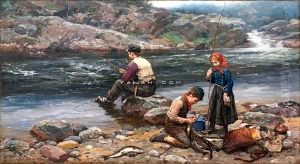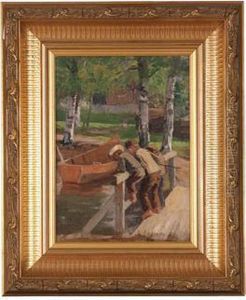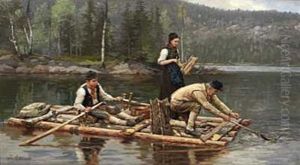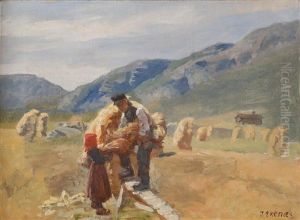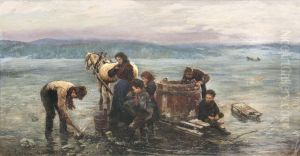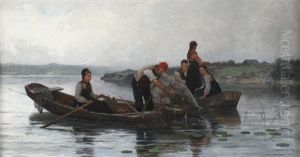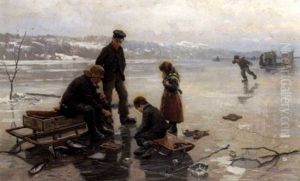Jahn Ekenaes Paintings
Jahn Ekenæs was a Norwegian painter, best known for his landscapes and genre scenes capturing the rural life of Norway in the late 19th and early 20th centuries. Born on December 19, 1847, in Drammen, Norway, Ekenæs showed an early interest in art, prompting his studies at the Royal Danish Academy of Fine Arts in Copenhagen. Under the guidance of prominent Danish artists such as Vilhelm Kyhn, he honed his skills and developed a keen eye for the nuances of light and atmosphere that would characterize his later work.
Ekenæs's art is deeply rooted in the National Romanticism movement, which sought to express the unique nature and culture of Norway. His paintings often feature the breathtaking Norwegian landscapes, from the serene fjords to the rugged mountains, imbued with a sense of tranquility and timeless beauty. He also had a profound interest in depicting the daily life of Norwegian peasants, their traditions, and customs, thus providing a valuable visual record of Norway's rural heritage during a period of significant social and cultural transformation.
Throughout his career, Ekenæs participated in numerous exhibitions both in Norway and abroad, earning recognition and accolades for his contributions to Norwegian art. His works are held in several prestigious collections, including the National Gallery of Norway, highlighting his lasting impact on the country's artistic legacy.
Jahn Ekenæs passed away on January 16, 1920, leaving behind a rich body of work that continues to be celebrated for its beauty, sensitivity, and insight into Norwegian culture and landscapes. His legacy is not only that of a painter but also of a cultural historian, capturing the essence of Norway at a pivotal moment in its history.
